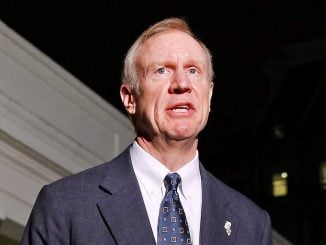RALEIGH – North Carolina is one of the fastest growing states in the nation. Continuous growth leads to changes in people, industries, jobs, places, environments and governments. It’s the result of the information and technology revolution that has connected North Carolina globally.
“In 1970, North Carolina was still a rural state and the majority of people were living in rural areas and small towns. It was still a state where the major industry were tobacco, textiles and furniture. It was a fast-growing state where people were moving here in search of jobs, a warmer climate, but it was still a state rooted in the industries that had moved the state in the 20th century,” said Dr. Michael L. Walden, nationally-recognized economist and the William Neal Reynolds Distinguished Professor of Agricultural and Resource Economics at North Carolina State University.
“By 2017, the state has totally changed. We are now a majority urban state. Our urban areas, especially the Triangle and Charlotte, are among the fastest growing areas in the nation. Every national business wants to have a presence in those two areas,” he added.
Walden recently published, “North Carolina Beyond the Connected Age: The Tar Heel State in 2050;” a sequel to his previous book, “North Carolina in the Connected Age.”
In his newest book, Walden notes North Carolina is moving beyond the connected age to a new era of living, working and producing. He offers his research, insight, predictions of future trends, and potential policy options for taxation, infrastructure and environmental issues.
One visible trend of North Carolina moving forward following the technical shift of society is the noticeable and dramatic shift in population between urban and rural areas.
“Our rural and small-town areas are struggling because tobacco, textiles and furniture were located in those areas. We have a great urban/rural divide,” said Walden.
In the coming years, a population growth spurt in the urban areas of Wake and Mecklenburg counties will continue and the geographical disparities between the urban and rural areas will continue to widen.
“While this major trend is a prediction, there could be some things that could change that. One is virtualization, a technique that is being perfected that would allow people to stay in their physical place but project themselves virtually into another physical space. That could change where people choose to live,” said Walden.
Virtualization could potentially be the difference in people choosing a geographical location. Many could choose to live in quaint rural areas and virtually send themselves into metropolises.
“I could see a future where these trends are reversed and we see a rural renaissance,” said Walden. “I challenge people to say in the 1960s they foresaw the technical revolution of computers, tablets, etc.”
To create an economic shift in rural areas, communities can attract manufacturing businesses.
“The land is cheaper in rural areas. The community college system is prepared to train people for specific skills in a factory, and we can’t forget, one of the largest industries in the state is agro-business,” said Walden.
Walden also details the impact of the state’s steadily increasing influx of retirees and tourists. “Baby boomers are retiring and are more mobile now than they have ever been. Economic development is anything that brings in money. Retirees bring their pensions and social security.” He sees the same opportunity to “drive tourism as an economic boost.”
Technology will continue to advance, renewable sources will become a focus, and more fields of study and jobs will present themselves that society may not know exist.
An informative and enlightening read, Walden’s book, “North Carolina Beyond the Connected Age,” delves into understanding the growth pattern of the state; the impacts a location choice has in living and working; how changes in a connected age reverberate into changes in occupations; how education is affected by the changes and how the government and its people play a role in the state’s economy.



